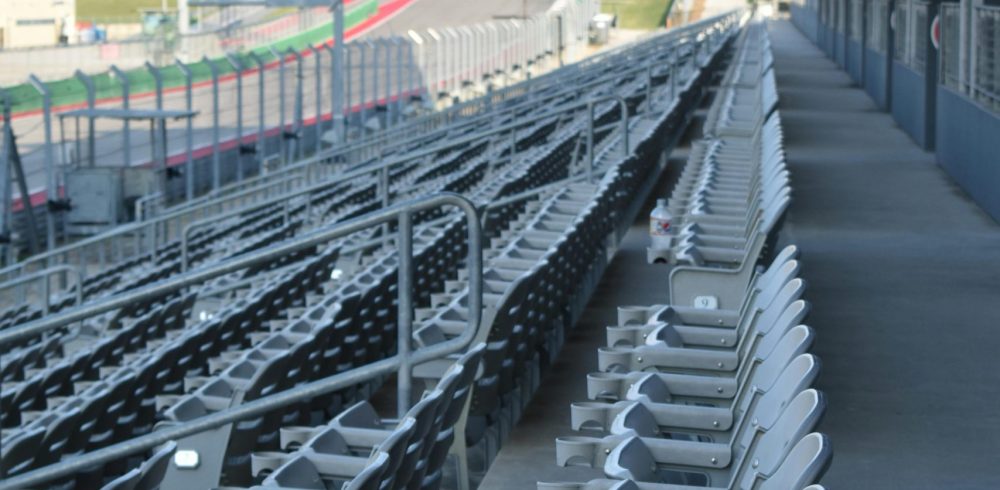The Daytona 200 is arguably the USA’s biggest motorcycle race, with 2024’s event attracting 127 riders and eight million digital viewers, according to MotoAmerica. Placing highly in the race is no mean feat and requires precise, advanced bike design, where the importance of reliable throttle control cannot be overlooked. Employing a high-power, compact brushed DC motor in the throttle actuator, such as those supplied by Electro Mechanical Systems (EMS) for Bike Sport Developments, is essential.
Motorcycle racing success doesn’t happen overnight. Teams extensively plan and test their bikes, ensuring that the tyres, frame, telemetry and rider are prepared for each competition’s unique conditions.
But there is one bike component that can make or break a rider’s chances of winning like no other — the throttle actuator. Responsible for controlling air flow to the bike’s engine, these actuators employ a DC motor to rotate the parts needed to open and close the throttle plate.
Reliable throttle control is essential for bike acceleration, deceleration, traction and stability. If the motor used in the actuator cuts out, the bike goes into failsafe mode, shutting down the engine and disqualifying the rider.
When motorcycle electronics specialist Bike Sport Developments was tasked with producing electronic throttle actuators for racing motorbikes by an American customer working closely with Suzuki, reliability was a key consideration.
“We have traditionally supplied mechanical actuators for client projects, which are operated by cables. However, the regulations of the American Motorcyclist Association races dictate that the actuator must be a computer-controlled ride-by-wire system. Essentially, these systems use the sensors from the electronic control unit, or the ECU, and the actuators to regulate the engine’s air flow supply,” explained Mick Boasman, founder of Bike Sport Developments.
“Therefore, when I first approached EMS three years ago, I was looking for a reliable electronic solution that could withstand the high temperatures and vibrations produced by the bike’s engine. At that time, I had little indication of the product volumes the client would need, so I had to make sure that the motor was readily available with short delivery times.”
The ideal solution
EMS supplied Bike Sports Developments with a FAULHABER brushed DC motor with a 23-millimetre (mm) diameter and a 26mm gearbox. EMS later reduced the motor size to 22mm, making the solution more compact and easier to integrate into the actuator assembly using the standard fixing points on the front of the gearhead and the flap on its outer shaft.
“As the sole UK distributor of FAULHABER motors, we have access to its innovative iron-free skew wound drive systems,” said Paul Boughey, Area Sales Manager at EMS. “This technology minimises the moment of inertia in the rotor, resulting in low cogging torque, increased precision and faster reaction times for the throttle.”
After a prototyping process lasting approximately five months, the electronic throttle actuators were delivered to Italy for verification from another partner, before being shipped to America for track testing. The solution proved to be highly competitive in races, resulting in several other American teams also requesting the same product.
However, the supplied motors started burning out after more mileage and time was applied on the product, which had the potential to negatively impact teams’ racing performance. Furthermore, the addition of the extra teams that had adopted the actuation systems made testing and altering the setup more difficult and time consuming for Bike Sport Developments.
Problem solving at full throttle
“When the motors began to burn out, the situation was very stressful, especially given the importance of engine reliability,” said Mick. “However, faced with these challenges, EMS really came into their own. The team worked alongside FAULHABER to identify a list of potential causes for the motor failures, which we were then able to systematically test and rule out one by one.”
Initially, EMS suggested altering the bike’s ECU system, which could have been overloading the motor. However, since the electronic software was supplied by another partner of Bike Sport Developments’ client and not directly through them, this proved unfeasible.
Bike Sport Developments eventually opted for a modular plugin inductor to sit between the bike’s ECU and the throttle actuator, smoothing the current supply.
“Throughout the fault testing process, EMS was always on hand to support us. The team’s suggestions showed not only their willingness to help, but also their extensive product and application knowledge,” said Mick.
“After disconnecting our motor from the wiring of the bike and fitting the module between the two components, the issues we’d previously experienced with overheating and burning out stopped pretty much instantly.”
Racing success
The project is now in its third year, with the last 18 months being free of motor faults. In this year’s Daytona 200, six of the top ten placing bikes were Suzuki GSX-R750s, which use the throttle actuators supplied by EMS and Bike Sport developments. During the race, the bikes achieved 100 per cent throttle control reliability.
The actuator solution has not only brought success on the track, but also resulted in higher sales for Bike Sport Developments. Despite initially predicting to receive less than ten orders, the business has now sold over 70 of the actuation systems, with customers including teams in England, Germany, the Netherlands and France.
Whether you’re looking for an off-the-shelf or custom drive system for your next project, get in touch with EMS’ knowledgeable team. Find out more about Bike Sport Developments, here.
Manufacturing & Engineering Magazine | The Home of Manufacturing Industry News









